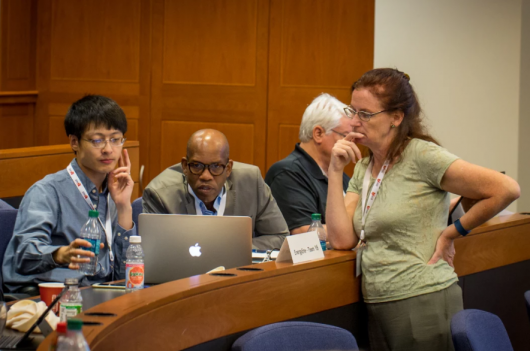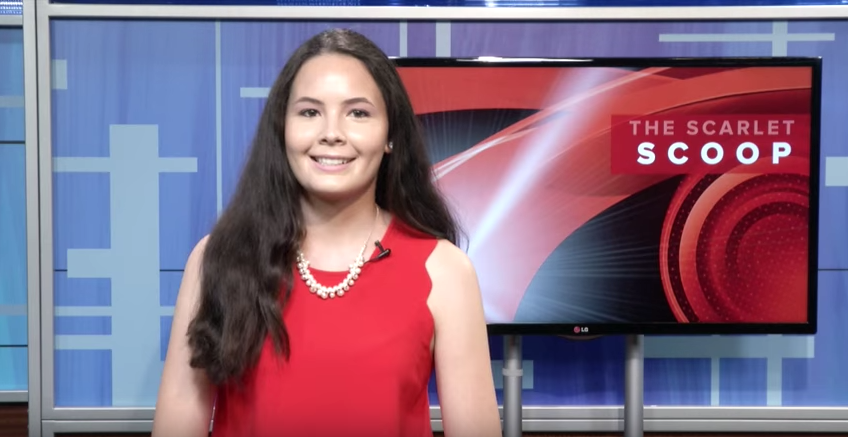
The EnergyEne team attends I-Corps@Ohio. Credit: Courtesy of Xu Zhang
Sometimes, research and business do not speak the same language.
To minimize the language barrier, three research groups from Ohio State are in the process of building startup companies spurred by their scientific discoveries OSU.
The faculty-led teams attended the summer 2016 I-Corps@Ohio program, a seven-week initiative aimed to advance scientists’ knowledge of entrepreneurship. Twenty-three teams from 12 universities, including three teams from OSU — Live Focus, EnergyEne and Bio-Pioneers — were chosen for the second round of I-Corps@Ohio.
“The Ohio State teams, as well as their counterparts from other institutions, showed they have what it takes to validate their ideas and form a successful startup,” said Michael Camp, program director of I-Corps@Ohio, in a news release.
Based on a program organized by the National Science Foundation, I-Corps@Ohio is funded by the Ohio Department of Higher Education, and accepts two cohorts each year.
Instructors and mentors helped research groups learn if their new technologies could be commercialized and what steps they should take in the future.
Camp said he hopes the program provides long-term impacts such as “technologies getting to the market to improve the quality of lives, the growth of our economy,” and “expanded career options for researchers and graduate students, and more venture capital coming to Ohio.”
One cohort was made up of teams from information technology, material science and energy and environment science. The other cohort was grouped by medtech, biotech and pharmaceuticals.
“The Ohio I-Corps is more customized for the local teams,” said Yi Zhao, associate professor of biomedical engineering and head of Live Focus.
Zhao said being separated based on similar characteristics was efficient because it “made it easy for us to communicate with one another and for the instructor to tailor the materials to fit this group of people.”
Live Focus is developing a way for modern camera lenses, like those on smartphones, to achieve optical clarity like that of a commercial microscope. Zhao said I-Corps@Ohio provided a workshop to understand FDA regulations, a stepping stone to commercialize Live Focus.
“In this I-Corps, I very much appreciate the instructions the team gave us,” Zhao said. “That workshop cannot teach us everything, but it’s a good starting point,” Zhao said. “It gave us some basic training about where and who you may want to refer to get help for your regulatory affairs.”
After completing I-Corps@Ohio, Live Focus received $200,000 from the National Science Foundation to show if its lens is technologically feasible.
Katrina Cornish, professor, Ohio Research Scholar and Endowed Chair in Bio-Based Emergent Materials and Department of Horticulture and Crop Science leads EnergyEne, a team developing latex materials that are safe for Type 1 and Type 2 latex allergies. She said that I-Corps@Ohio helped differentiate her product from other similar materials.
“It really helped us focus a lot more on the physical properties of the latex products, which are things like superb strength, thin films, it’s stretchier and softer, and they really helped us focus on capitalizing on those properties,” Cornish said.
Cornish added that I-Corps@Ohio provided EnergyEne more areas to expand and promote its latex product.
“That program really allowed us to validate and develop the markets into which we wish to distribute this material, rather than just what we thought was the case,” she said. “There are several markets we weren’t expecting, like veterinary medicine. That’s where the real benefit was, it’s really helped us move forward, and made us a lot more fundable than we were before.”
Both Live Focus and EnergyEne are I-Corps@Ohio success stories. As they continue to work on commercializing their product, Camp said he is hopeful that research groups will be “more confident in their capabilities and skills to launch new ventures.”


